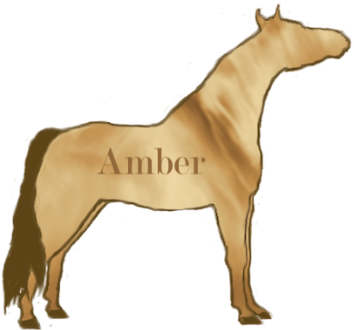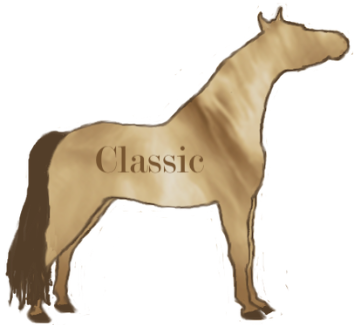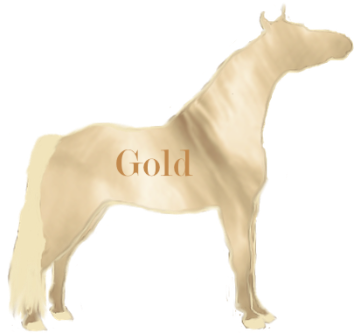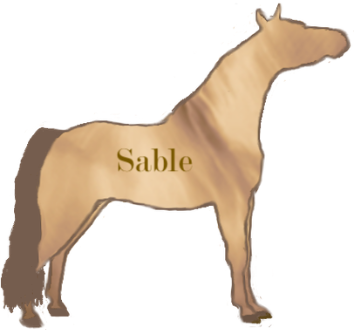A horse must have at least one champagne parent to inherit the champagne gene, champagne is not recessive if not expressed the horse is not a carrier. The most distinctive traits of horses with the champagne gene are the hazel eyes and purplish/pinkish freckled skin, eyes which are bright blue and skin bright pink at birth. The coat color and mane and tail. If a horse inherits the champagne gene from either or both parents, a coat that would otherwise be chestnut is instead gold champagne, with bay corresponding to amber champagne, seal brown to sable champagne, and black to classic champagne.
The color of the skin is the single most important visual identifier of champagne horses: in the adult horse, the skin is "pink with abundant dark freckles, except under white markings. "The freckles - not mottles, splotches, specks, or blotches - are dark and may have a purple cast, and are small and numerous. The skin may exhibit an overall lavender tone. The color qualities of the skin are most evident around the eyes and muzzle, under the tail, and on the udder or sheath.
The eyes of an adult champagne horse are most often described as hazel or amber. In the foal or very young, the eyes are bright blue to blue-green and the skin is bright pink. The champagne blue foal eye is creamier than other types of blue eye such as the bright, pigmented blue seen on some Splash white or overo horses.
While horses with white markings may sunburn on exposed un-pigmented skin, the freckled-pink skin of a champagne horse is said to tan instead, most do not have an issue with champagne horse’s sun burning.
There is no need to wonder or question if a champagne dilute is standing right before your eyes as testing is available, by the genetic lab of your choice.

Amber Champagne is produced by the action of champagne on a bay coat. The coat is orangey gold with chocolate points. Just as there are varying shades of bay, the amber body coat may vary in shade as well. The legs are often lighter than the mane and tail, and the colored points may be difficult to see.

Classic champagne is, as its name suggests, the coat color most associated with the champagne gene. It is produced by the action of champagne on a black coat. The body coat is chocolate, the mane and tail a darker shade. The legs may also be slightly darker.

